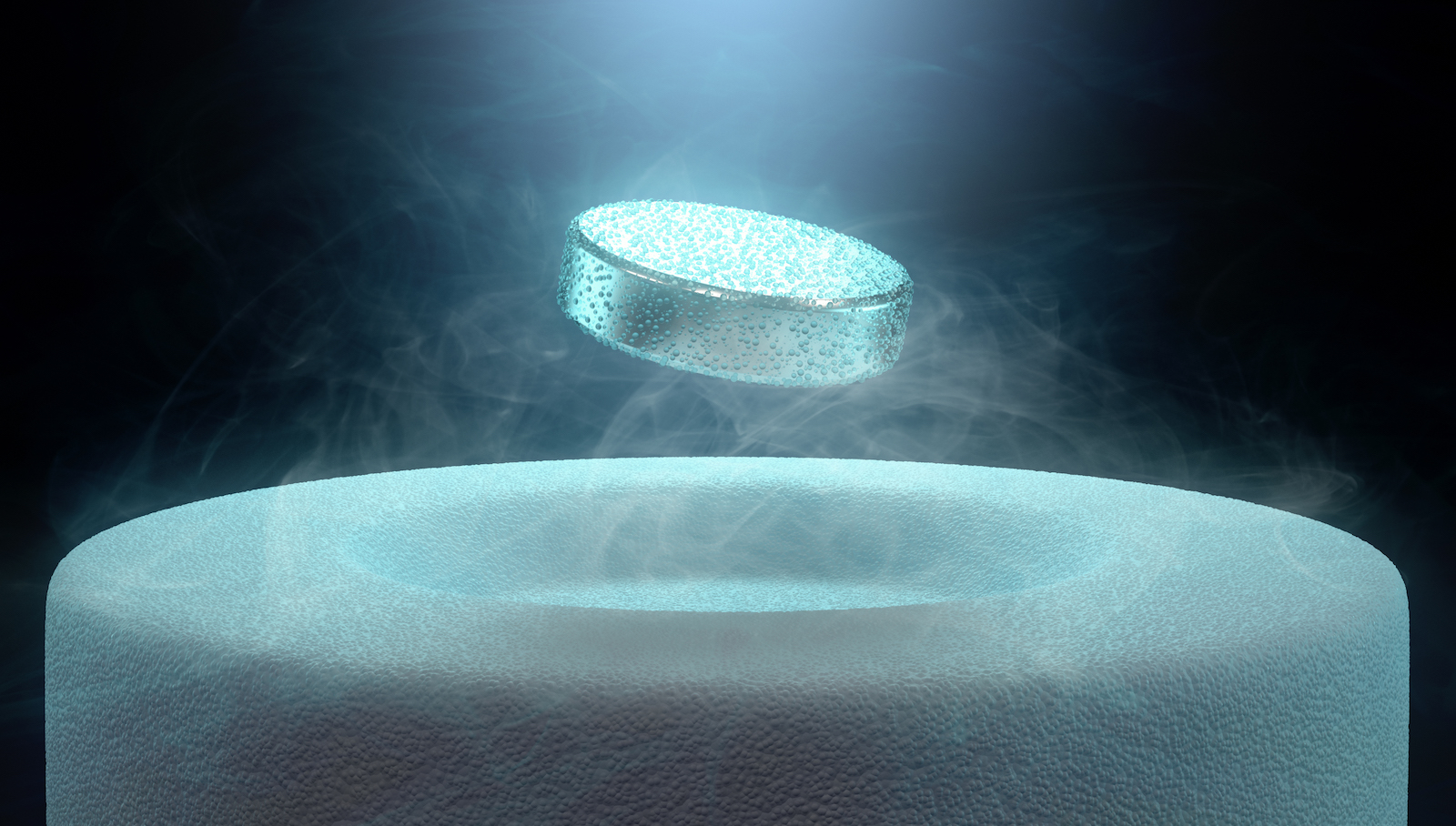Physicists find superconductor behavior at temperatures once thought 'impossible'
Scientists have observed an unexpected new behavior in a superconducting material. If physicists can figure out the cause, it could help them to find room-temperature superconductors.

Scientists have found a key process required for superconductivity occurring at higher temperatures than previously thought. It could be a small but significant step in the search for one of the "holy grails" of physics, a superconductor that operates at room temperature.
The discovery, made inside the unlikely material of an electrical insulator, reveals electrons pairing up at temperatures of up to minus 190 degrees Fahrenheit (minus 123 degrees Celsius) — one of the secret ingredients to the near-lossless flow of electricity in extremely cold superconducting materials.
So far, the physicists are baffled by why this is happening. But understanding it could help them find room-temperature superconductors. The researchers published their findings Aug. 15 in the journal Science.
"The electron pairs are telling us that they are ready to be superconducting, but something is stopping them," co-author Ke-Jun Xu, a graduate student in applied physics at Stanford University, said in a statement. "If we can find a new method to synchronize the pairs, we could apply that to possibly building higher temperature superconductors."
Superconductivity emerges from the ripples left in the wakes of electrons as they move through a material. At low enough temperatures, these ripples draw atomic nuclei to each other, in turn causing a slight offset in charge that attracts a second electron to the first.
Normally, two negative charges should repel each other. But instead, something strange happens: the electrons become bound together into a "Cooper pair."
Related: Room-temperature superconductors: The facts behind the 'holy grail' of physics
Sign up for the Live Science daily newsletter now
Get the world’s most fascinating discoveries delivered straight to your inbox.
Cooper pairs follow different quantum mechanical rules than those of lone electrons. Instead of stacking outward in energy shells, they act like particles of light, an infinite number of which can occupy the same point in space at the same time. If enough of these Cooper pairs are created throughout a material, they become a superfluid, flowing without any loss of energy due to electrical resistance.
The first superconductors, discovered by Dutch physicist Heike Kamerlingh Onnes in 1911, transitioned into this zero electrical resistivity state at unimaginably cold temperatures — near absolute zero (minus 459.67 F, or minus 273.15 C). Yet, in 1986, physicists found a copper-based material, called a cuprate, which becomes a superconductor at a much warmer (but still very cold) minus 211 F (minus 135 C).
Physicists hoped this discovery would lead them to room-temperature superconductors. Yet insights into what causes cuprates to display their unusual behavior slowed and, last year, viral claims of viable room-temperature superconductors ended in allegations of data falsification and disappointment.
To investigate further, the scientists behind the new research turned to a cuprate known as neodymium cerium copper oxide.This material's maximum superconducting temperature is relatively low at minus 414.67 F (minus 248 C), so scientists haven't bothered to study it much. But when the study researchers shone ultraviolet light onto its surface they observed something strange.
Usually, when packets of light, or photons, strike a cuprate which carries unpaired electrons, the photons give the electrons enough energy to be ejected from the material, causing it to lose a lot of energy. But electrons in Cooper pairs can resist their photonic eviction, causing the material to lose only a little bit of energy.
Despite its zero resistance state occurring only at very low temperatures, the researchers found that the energy gap persisted in the new material up to 150 K, and that the pairing was, bizarrely, the strongest in the most samples best at resisting the flow of electrical current.
This means that, even though the cuprate is unlikely to reach room temperature superconductivity, it could contain some hints in finding a material that can.
"Our findings open a potentially rich new path forward. We plan to study this pairing gap in the future to help engineer superconductors using new methods," senior author Zhi-Xun Shen, a professor of physics at Stanford, said in the statement. "On the one hand, we plan to use similar experimental approaches to gain further insight into this incoherent pairing state. On the other hand, we want to find ways to manipulate these materials to perhaps coerce these incoherent pairs into synchronization."

Ben Turner is a U.K. based staff writer at Live Science. He covers physics and astronomy, among other topics like tech and climate change. He graduated from University College London with a degree in particle physics before training as a journalist. When he's not writing, Ben enjoys reading literature, playing the guitar and embarrassing himself with chess.









